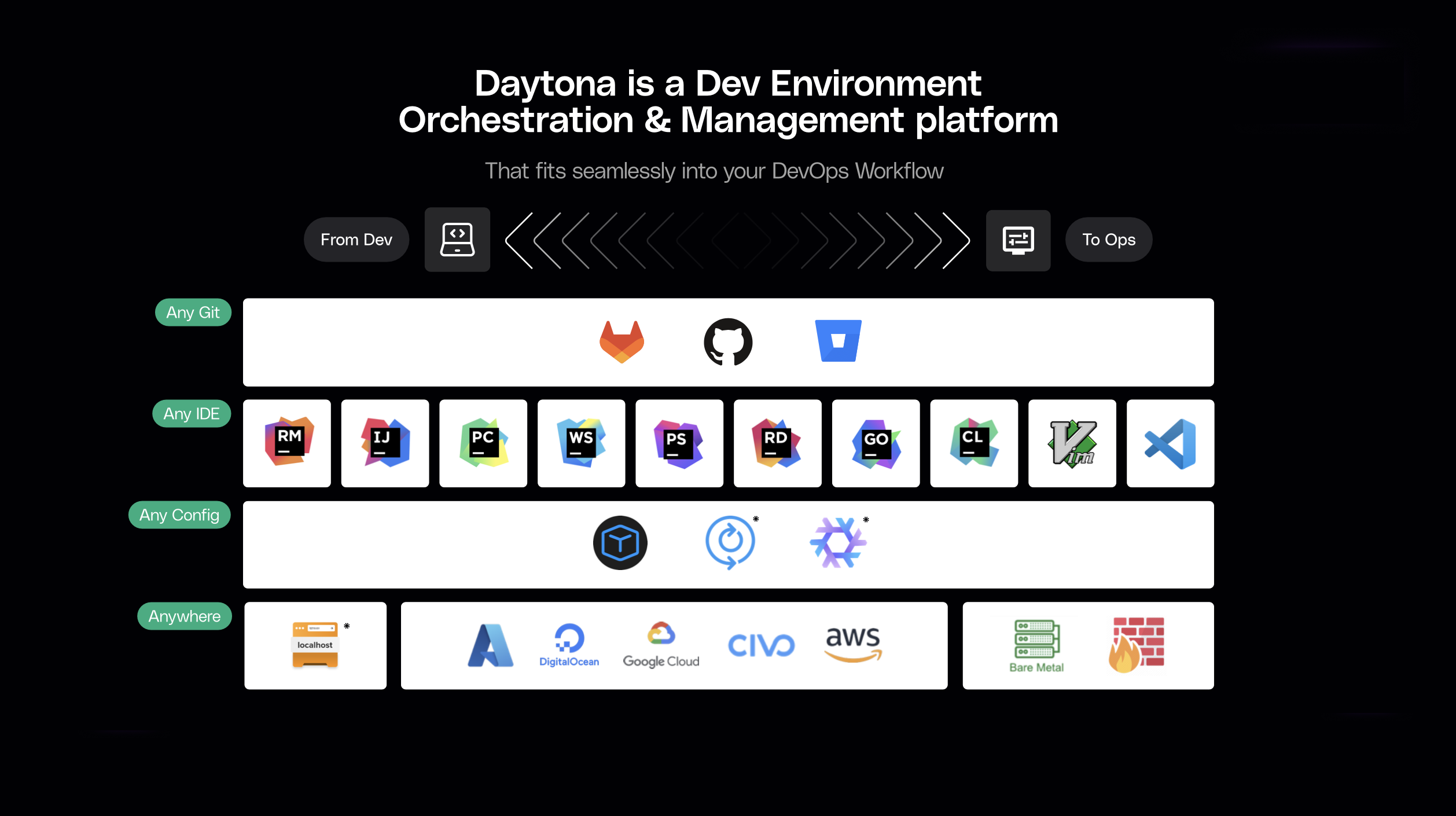Daytona has launched a development environment for on-premises IT environments that provides all the benefits of a cloud-based alternative.
Ivan Burazin, CEO of Daytona, said the company’s namesake alternative to platforms such as GitHub Codespaces enables DevOps teams to retain control and better secure the intellectual property created by developers while simultaneously making them more productive.
The Daytona platform enables developers to instantly start coding by accessing a development environment based on a set of preferred tools and frameworks, he added. Platform engineering teams looking to scale DevOps workflows can then take advantage of fine-grained access controls and advanced security features across developer environments spanning hybrid IT environments, said Burazin.
He added that the ability to centrally manage development environments is designed to appeal to organizations attempting to improve developer productivity in highly regulated industries that are now allowed to use cloud-based alternatives. This is becoming a more pressing issue because as regulations become more stringent, organizations are trying to move source code off developers’ individual laptops that are more easily breached than a server environment, noted Burazin. The challenge is striking the right balance between enabling flexibility and centralizing the management of developer environments, he added.

Of course, many of those organizations could opt to construct their own internal developer portal (IDP) to accomplish the same goal, but in most cases, that would prove expensive to both construct and maintain, noted Burazin.
The same core team that created Codeanywhere, a cloud-based integrated development environment (IDE), is also behind the development of Daytona. The issue that organizations previously encountered when attempting to shift development to the cloud is that, in addition to regulations that forbid it, developers could not easily customize their environments. The Daytona platform is designed to enable more flexibility without sacrificing control, said Burazin.
Arguably, organizations are more focused on developer productivity today than at any time in recent memory. Developers typically spend as much as 70% of their time maintaining environments versus writing code, so there is a clear need to reduce the level of toil. Reducing that toil doesn’t guarantee developers will spend more time writing code, but it does create the opportunity. DevOps teams are, as a consequence, being asked to eliminate as many of the bottlenecks that conspire to reduce developer productivity as possible in furtherance of that overall effort.
Developer productivity issues are not going to be resolved overnight. Developers will not always be immediately inclined to give up control unless it’s conclusively proven that a platform engineering team will be responsive to their needs. The cultural challenge is finding that fine line between reducing friction while still giving the developer the sense that they can add a tool to a workflow that enables them to innovate.
One way or another, change is coming to DevOps workflows. Each organization will need to determine how quickly that change will occur, but in the absence of any meaningful change, it’s clear they won’t be able to compete against rivals capable of producing higher-quality code faster.





